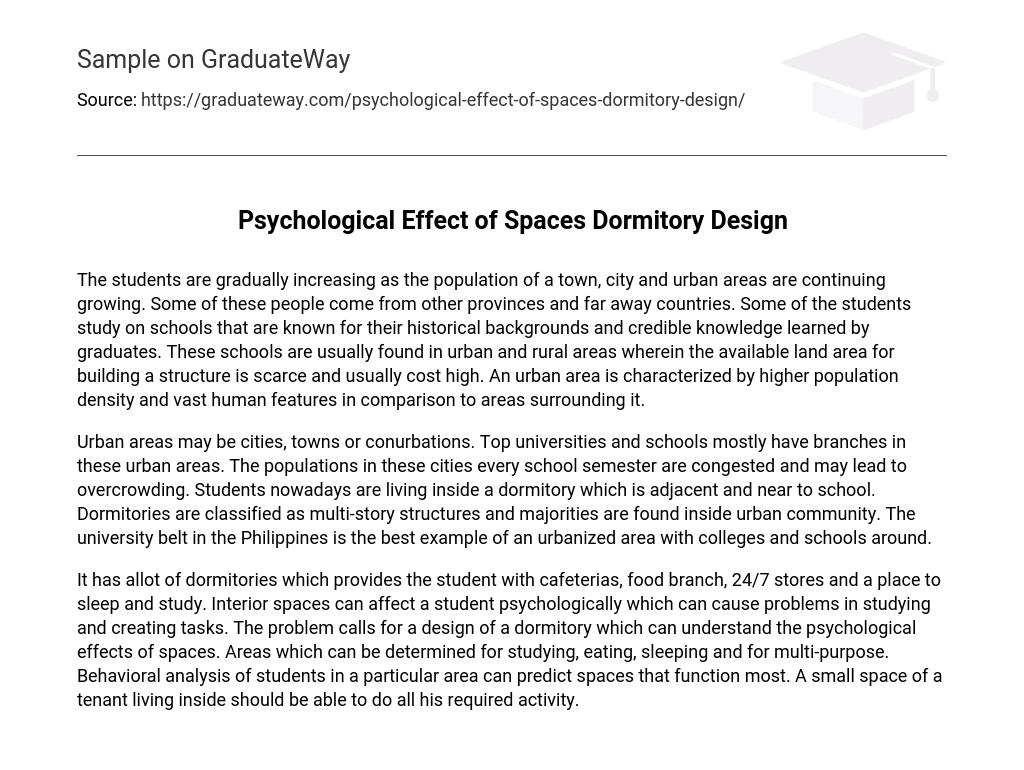With the growth of towns, cities, and urban areas, there is an increasing number of students coming from other provinces and distant countries. Many of these students attend schools known for their historical significance and excellent education provided by previous alumni. These schools are usually found in urban and rural areas where land availability for construction is limited and costly. Urban areas are characterized by their high population density and numerous man-made structures compared to the surrounding regions.
Urban areas, such as cities, towns, or conurbations, are where top universities and schools are mainly located. These urban areas often experience overcrowding during each school semester due to the high population. Nowadays, students live in dormitories that are close to their schools. Dormitories are typically multi-story structures and are mostly found within urban communities. The university belt in the Philippines is a prime example of an urbanized area with numerous colleges and schools.
The dormitory offers various amenities for students, including cafeterias, food branches, 24/7 stores, and study and sleeping areas. The design of the dormitory takes into consideration the psychological impact of interior spaces on students’ studying and task performance. It aims to create designated areas for studying, eating, sleeping, and multi-purpose activities. By analyzing the behavior of students in different areas, the dormitory can determine the most functional spaces. Additionally, each individual tenant should have a small yet efficient living space to accommodate all their required activities.





